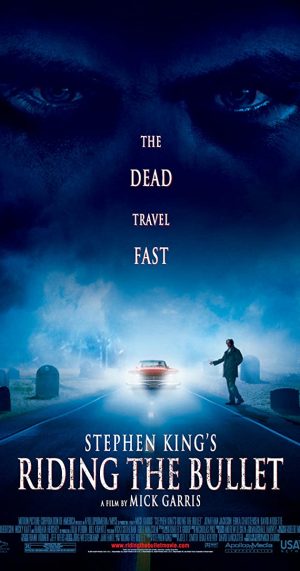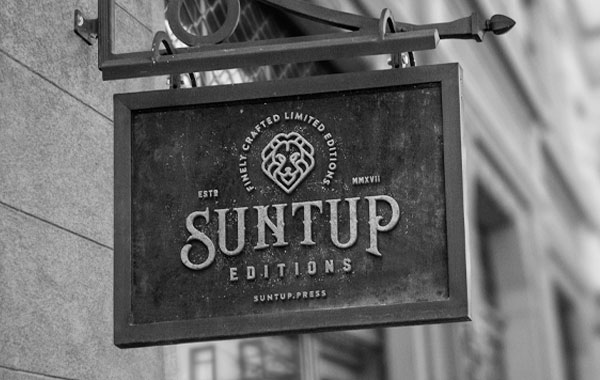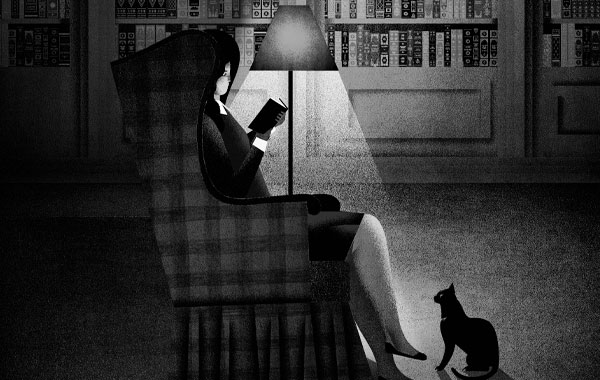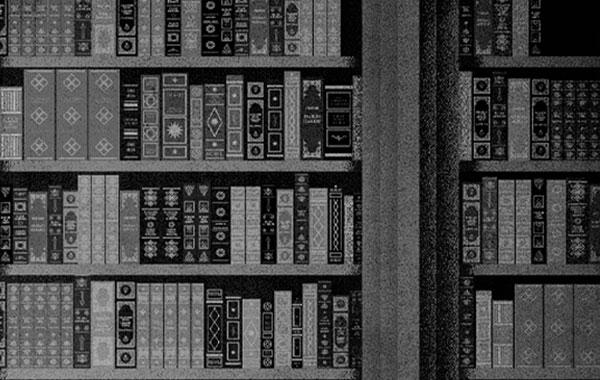
When I last spoke with director Mick Garris, the world was a very different place. I caught up with Mick again this Summer amid the global pandemic to get his thoughts on the eerie similarities between COVID-19 and his 1994 miniseries adaptation of Stephen King’s The Stand.
We also talked about his many other Stephen King adaptations including Quicksilver Highway, The Shining, Riding the Bullet, Desperation, and Bag of Bones – plus a couple of King adaptations that never quite got off the ground. As the director of more Stephen King movies than any person in history, Mick Garris has some incredible tales to tell.
JS: COVID-19 is not nearly as deadly as Captain Trips, but there are certainly similarities. So I’m going to get the most obvious question out of the way right away: Did you ever imagine when making The Stand that you would be living in a world that’s eerily similar to it one day?
MG: No. Even when I read the book, as realistic as it was, it still seemed like science fiction. You know, not spaceship and out-of-planet science fiction, but science-based fiction horror. I never anticipated this. And there are eerie similarities. Obviously, the least similar element is that most people don’t get COVID-19. And most people who do get it are not affected fatally, but it’s kind of terrifying to see an entire planet washed over by this pandemic. I never, never anticipated the reality of something like this. Of course, we’ve had SARS and MERS and Ebola since the making of The Stand miniseries and all of those were eerie and scary too, but this is the most wide-reaching.

JS: What is The Stand about to you, and what do you think we can learn from it in these times?
MG: The real theme of The Stand for me was being able to become a patriot again, and not let the country go to the rabid right wing but to start a society over the way we intended it. The way the Founding Fathers intended it, based on freedom and equality. The visual moment that is most important to me in The Stand is when Gary Sinise just breaks out of the medical facility. Everyone else in it is dead and he jumps over the wall, lands on the grass, looks up and there’s the American flag waving overhead. That’s not something that was in the book, but it meant something to me as someone who cares about the planet, about the country, about administrations, and the ideal of America. What it was founded upon has been so raked over and plundered and destroyed in so many ways by financial interests and personal interest and rabid racism and things like that. The idea of being able to reboot and start over again with what the dream of America was meant to be is what The Stand is about. To be able to reclaim patriotism.
JS: It’s interesting that you mention that moment with the American flag, because I noticed that in the final scene in Las Vegas, one of Flagg’s Followers is carrying a Confederate flag. Is that something you did on purpose?
MG: Oh yeah, of course. And the other flags that are mounted at the execution in the end are intended to be very similar to Nazi flags.
JS: You got away with a lot for 90’s television. How did you get so much past the censors?
MG: Well, the video release is a little more explicit than what was aired on ABC. Not much, but a little. I think if you advertise The Stand, that’s one thing, but if you advertise Stephen King’s The Stand, it’s something else and you can reach a bit further. The name Stephen King carries a lot of weight. We got away with a lot of things. One of the first notes that Standards and Practices gave us before we started shooting was to not show any corpses with their eyes open. So in the opening titles during “Don’t Fear the Reaper” we’re just moving in on all this death that has been left behind in the lab by Captain Trips, and the camera just moves right in on one of the women lab technicians and her wide open clouded dead eyes. That was right in the title sequence and it was us sticking the middle finger in the eye of the censors.
JS: Were you always thinking of Gary Sinise and Molly Ringwald for the roles, or did you have other people in mind?

MG: I didn’t have anybody in mind really, but we did not always think of them for the roles either. When we were first casting, ABC said, “Well, Stephen King is the star. We don’t have to worry about bringing any movie or TV stars in for this.” But when the process actually began it was like, “Well, wouldn’t it be great to get people like, you know, Molly Ringwald and Rob Lowe?” They were huge movie stars at the time. Rob Lowe had just gone through his sex tape scandal, so he was a bit nuclear at the time. A bit radioactive.
JS: He’s a huge fan of Stephen King though. I know The Stand is one of his favorite books.
MG: Right. I didn’t know that until I met him. I thought, you know, it’s Rob Lowe. Pretty boy. They picked him for Larry Underwood because it’s so obvious, and a little on the nose. I felt it would be much more interesting to cast against type as Nick Andros, and Rob loved that idea when I met with him. He was a lovely guy and a huge horror fan. So, any doubts that I had about him being a part of it went away very quickly. He was very excited. He is deaf in one ear, and the character he is playing is deaf, so he said, “Maybe I can wear a bug in the other ear, you know with white noise to make it more real.” And I said to him, “You know, acting is fine.”
Molly was somebody no one had in mind, but the casting people at the network were recommending her. They had just done a TV movie, a really good drama that she was fantastic in. So, she was nobody’s idea except the network’s, but she came in and did a very good job. I don’t think she respected the material as much as everybody else did, but once you commit to a project, you give it your all and I think she did a great job in it. She just maybe wasn’t as into it as the rest of the cast.
JS: As long as The Stand is as a miniseries, there still seems to be so much missing from the movie. The way it jumps between Part Two and Part Three is a bit jarring. Was there anything that you always wish that you could have included?
MG: Not at all. We based it on the original version of the book, not the complete and uncut edition. So, The Kid was not in the original version of the book. We combined two characters to be Nadine Cross. But I’m really happy with what the script was. I think King did an amazing job of adaptation. It’s the most amazing adaptation I’d ever read from massive epic book to massive epic screenplay. I didn’t miss anything. Despite that jump in time between the two nights. I’m really happy with how much we were able to include. If it were a feature film, it would have been disastrous. You would have had to lose so much, and they tried for many years to turn it into a feature film. The fact that we had, well, eight television hours, but six real hours to tell the story was exciting to King and exciting to me.
JS: Well, it was certainly a huge success, receiving a total of six Primetime Emmy Award nominations, and from its success, you would come to work with Stephen King again on the television miniseries adaptation of The Shining.
MG: Yes, The Shining was next in 1997.
JS: Here you have this incredible opportunity to tell the story that the novel tells, and for King to adapt it himself. Were you at all a fan of Kubrick’s version of The Shining?
MG: If you have gray hair and were a fan of the novel first, and then went to see The Shining in the theater in 1980, you would have been – as I was – hugely disappointed. I mean, I was never looking more forward to a movie. This great filmmaker tackling this great novel by this great artist. My favorite novel of all time. And it was so antithetical to everything Steve had put into this book. I was profoundly disappointed. Now, over the years I came to love it as a Kubrick film. It is a great Kubrick film, but it’s a terrible King adaptation. It’s kind of an anti-horror film. It takes all of the tropes and puts them on their head. David Cronenberg once said to me, “The problem with Kubrick’s The Shining is that Jack is crazy from the very get go.” The whole point of the book is here is a very human guy trying to do his best, battling alcoholism, and he’s being driven by his demons. It’s metaphorical. It’s something Steve lived as an alcoholic, and he has spent the last several decades as a recovering alcoholic.
So, I was not a huge fan of that film until later when I could separate it from the book. But a lot of people saw that movie before they ever read the book, and of course that was great to them. King had written at least one draft of The Shining for Kubrick who just – I don’t know if he ever even read it. He might have just dumped it in the trash, but he completely ignored all of King’s input on the film. After The Stand had become the biggest miniseries in history, ABC said, “What do you want to do next? You can do anything you want.” And Steve said, “Well, I’d kind of like another shot at telling The Shining on film.”
JS: Was it daunting to you at all?
MG: I was so naïve. I just saw it as an opportunity to work with Steve again and to tell the story of my favorite novel. But you know, this was in the early days of the Internet, and suddenly all of these Kubrick lovers are just bashing. They were all saying, “Oh they’re doing The Shining with the guy from Wings and the dude who directed Critters 2. Kubrick is God. It’s an abomination.” I thought oh gosh, I guess I was really naïve about this, but we went ahead and did it.
JS: That must have been incredibly difficult to stand up against.
MG: Well, that’s the job. If you take the job, you commit your whole heart and soul to it, and I love that book, and here Stephen King is entrusting me with the keys to it. So, you know, you just go forward in doing your best work and doing the best you can and believing in it, knowing it’s something special. We weren’t remaking the Kubrick film. We were ignoring the Kubrick film in every sense. We were making Stephen King’s The Shining.
JS: As you mentioned, King had written a draft or two of The Shining for Kubrick. Did he dig up those original screenplays as a place to begin working from, or did he just completely start from scratch?
MG: Knowing Steve and the way he works, I’m sure he just started on page one entirely fresh. It was a very different project too. This was a six-hour miniseries. There would be no reason to go back to a two-hour movie script.
JS: There’s so much more of King’s novel of course in this miniseries. The topiary pieces coming to life is one of my favorite moments. And it’s filmed at the location which inspired the novel, the famously haunted Stanley Hotel. I have to ask, did you experience any strange happenings at all while shooting there, and have you ever stayed in room 217?

MG: The first night we scouted the place, I asked to stay in room 217. Now, I’m not a believer in ghosts or the supernatural. I would love to be proven wrong. I would like to say that I have an open mind about it, but until I experience it directly, it’s very difficult for me to accept.
There were a couple of weird things that happened though. The first night of scouting the location, we were all exhausted. We had been working all day, and I was asleep by 10 o’clock. But for some reason at exactly midnight I woke up in a cold sweat. I didn’t see anything. I didn’t hear anything. But I woke up at exactly midnight in a cold sweat.
Then, while we were shooting, the crew was living in the hotel. We were shooting a scene in the lobby, and the entire cast and crew were downstairs, so nobody was in their rooms, and directly overhead we kept hearing pounding and pounding and pounding. So, we went upstairs to check, and it was coming from the first assistant director’s room. Of course, no one was there. David was downstairs with us shooting the movie. Nobody ever figured out what it was, and it stopped eventually, but it delayed production. We had to put up with it and not shoot because of all that racket.
Other people claim to have had experiences as well. The casting coach, Dawn Jeffory Nelson, felt someone sitting on the edge of her bed in her hotel room once when no one was there. I wish I had better stories to tell you.
JS: Those are pretty darn great as far as I’m concerned!
MG: Well, that may be, but they are not enough to make me a believer.
JS: The same year as The Shining, you did a second King adaptation. This one is a sort of double feature, adapting a story of Clive Barker’s and a story of Stephen King’s for a movie that would be called Quicksilver Highway.
MG: Fox came to me to try to come up with a backdoor pilot, and Quicksilver Highway came from that. It was kind of a breather after all the hard work and claustrophobia of The Shining. The Shining was so dramatically intense and dark and emotional that I wanted to do something more playful and a more recreational. A movie that didn’t have as much on its mind other than to give you a good time and some scares and a few laughs. So, I went to Clive Barker, and I went to Steve, and I asked about getting these two stories. It was actually a backdoor pilot in the hopes that we would have created an anthology series with Christopher Lloyd’s character.
JS: It must have been great fun working with Christopher Lloyd.
MG: He’s really great. The first time I met him was on Amazing Stories. I had written an episode with Tom McClintock called “Go to the Head of the Class” and Christopher Lloyd plays an evil teacher whose head comes off. He’s very eccentric. He’s very smart. He’s very quiet and serious between shooting, and I just love him.
JS: Now when exactly is it between The Stand, The Shining, and Quicksilver Highway, that Michael Jackson reaches out to you and says, “Hey, Mick. Let’s make Ghosts.”
MG: Oh gosh, that was back during The Stand, but it wouldn’t come out until many years after. It was a very problematic production, for the obvious reasons of course, but also because we were in post-production on The Stand when Stephen King told Michael Jackson that I would be the right guy to direct this video they were working on together. I was going into post production and the producer Richard Rubinstein threatened to sue me if I were to take any time off from post production. So, there was a bit of a battle royale there, but everything worked out, and I did shoot the first two weeks of Ghosts. That was back in 1993, but it was shut down because that’s when the first scandal came out. Which, whether you believe it or not, I don’t know. The Michael I knew was very kind and generous and would not have indulged in any of that sort of thing, but that Leaving Neverland documentary is pretty convincing. My experience with Michael was really good, but he disappeared, and we tried to do it in different places around the globe. All of the sets were broken down and shipped to Japan to potentially shoot it there, and I would have gone to finish it there, but it went through three years of Michael giving me calls at midnight saying, (imitates Michael Jackson’s voice) “Mick, you gotta belieeeve. You gotta believe it’s gonna happen and it’s gonna be so beautiful.”
Once it was finally back on track, I was about to start production on The Shining, and I had to explain to Michael that I couldn’t just move something like that around. Michael time was very fluid. You cannot plan on a specific time or day with Michael, so once it kept getting closer and closer to The Shining, I suggested that Stan Winston finish it. They were good friends. They had worked together before. Stan had just done a great job directing Pumpkinhead, so that all worked out, and Stan finished it.
JS: It would be seven years between Quicksilver Highway and your next Stephen King adaptation with Riding the Bullet. And here, we arrive at another mother/son tale, which is quite a recurring theme in your work.

MG: You know, it was never really that cognizant on my part. You take the projects that come to you. Sleepwalkers certainly was already a fully finished screenplay when I became involved with it. “Riding the Bullet” was already about a mother/son relationship, however I really responded to this because it was only a 30-page short story, and I was able to turn it into a feature film. Only about the first third or half is King’s story. I set it in a different time and place. I threw in a lot of personal things. I was raised with two brothers and a sister by my mother after my mother and father divorced when I was 12 or 13, and we went through some tough times together. Financially and psychologically.
JS: “It’s you and me against the world” times.
MG: Yes, exactly. That may or may not have been a line from King’s story, but as I wrote the screenplay I turned it into something much more personal and filled with experiences from my life. My mother did not die, or had not died at that time, but I’d lost a brother and my father before I made that film. So, I had gone through a lot of realizations. The whole idea of Alan being an artist who is obsessed with dark images and death and the like, I could identify with. It wasn’t in King’s short story, but you know thinking of death and horror and horror movies and horror novels as glamorous and beautiful, well once you’re face-to-face with mortality, it’s not so much fun. That’s kind of what that movie was about, even more than the mother/son relationship.
JS: What was it in King’s story that jumped off the page at you and inspired you to do it?
MG: I loved it being a horror version of Sophie’s Choice. It’s not only a guy who has to make a life and death choice that involves himself, but it also involves his mother, and it inspired me to set it in 1969 as a metaphor for a time of social change where our society was making some pretty dark choices that tended not to work out so well. That was also the year I graduated high school.
JS: Would you say that it’s the most personal film you’ve ever made?
MG: It is the most personal and the least successful.
JS: Oh, that’s a shame. I wasn’t aware of that.
MG: I don’t know if there’s a correlation there.
JS: I really enjoyed it.
MG: Thank you. Not that many people have seen it, and those who did saw it on USA where it was cut to shit. The movie jumps around with time and place a lot in the story, so to have big chunks of it taken out makes it even more confusing in a way I had not intended.
JS: You have some absolutely incredible shots in that movie. The roller coaster shots stand out to me the most, and I can’t imagine how you got the whole cast comfortable enough to do that.
MG: They were all cool with it, except for Barbra Hershey. She had never been on a roller coaster before, and she was terrified. I said, “We will make this as easy as possible for you. I promise you, it’s really fun. We won’t do a rehearsal. We’ll just do it once, and then you let me know if we can continue to cover it.” She was a real trooper, and I love her. We did it only once with her there. The cameras are mounted on the roller coaster in front of the actors so it is facing them, and all of the reactions are real. If you could see the dailies, at the end of the take, after I yell cut but before they actually turned the cameras off, you can see Barbra go, “Um, Mick, can I talk to you for a minute?”
She was terrified. It was a horrible experience for her. So, for the other coverage we used the double where she’s covering her face.
JS: Wow, I would have never even known that isn’t her.
MG: Well, we had three cameras mounted when we shot Barbara, so there was a lot of her to use. That’s the magic of movies and editing.
JS: In 2006, you would bring Stephen King’s novel Desperation to television, and this feels like a conglomerate of all the movies that you have not only made up to this point, but all the movies that you love. Within the first few minutes of this movie, I feel like there’s homage to The Texas Chainsaw Massacre. There are references to The Twilight Zone, and it even has a bit of a that feeling of Duel to it. Is all of that intentional on your part?

MG: We tried for seven years to get Desperation made as a feature, and despite it being a Stephen King bestselling novel with a script by King, we could not get any traction. All of those things you mention might have been on Steve’s mind because he wrote the script. I don’t remember tackling them specifically, but I do love the desert. Desert noir is one of my favorite subgenres. The first fifteen minutes of that film is my favorite part. That’s where all the tension is.
JS: It’s a really strong open.
MG: I think a big problem is when Ron Perlman disappears. That character is so delicious. Once he’s gone, some of the power of the story is gone. Not that many people saw it when it was broadcast either. It was an unconventional format. It a three-hour TV movie.
JS: It’s funny, watching it now, you have Henry Thomas and Annabeth Gish sitting together in the back of that cop car and it took me a minute while I was watching it, but I thought, “Didn’t I just see them somewhere together?” And it was in The Haunting of Hill House, Mike Flanagan’s series for Netflix.
MG: That’s right!
JS: I wonder if he took some inspiration from the casting of Desperation.
MG: I’m sure he did. Flanagan is a really bright guy, and a huge King fan. He’s a very talented guy, and I loved watching The Haunting of Hill House and seeing Henry Thomas and Annabeth Gish working together. I’ve worked with them both separately many times. I’m always looking forward to the next time I can work with either of them.
JS: There was a time King wanted to direct Gerald’s Game and have you produce it. Can you tell me about those early conversations and how the two of you would have adapted the movie?
MG: I had always wanted to direct it from the time I read the book. I thought it was fantastic, and I came up with a way that I thought you could get away with having a woman handcuffed to a bed for 90 minutes. In the book she’s naked, and you just can’t get away with that without it being really exploitive and ugly. But there were ways to approach it, and Flanagan did it in a very interesting way and did a very good job with that. For a while, King and I were talking about it, and Steve said it was something he would like to direct, and if so he’d like me to be there producing it. It never really got much further than us just discussing it and talking about how it might be possible to do it. It became available shortly, and I wanted to attach myself to it, but I guess Netflix picked it up to do with Flanagan. Once I saw it was Mike making the movie, I thought okay we’re in good hands here. He loves King’s stuff as much as I do, and he is really good at interpreting Steve’s work. Gerald’s Game is one of my favorite King books of all time. It is so unrelenting, and King rarely writes sexual stuff. It was an expression of a side you don’t often see from him. I really loved it. It’s so filled with taboo that you know, I was just attracted to it immediately.
JS: Were there any other movies that you discussed making that never got off the ground?
MG: We talked about doing The Dark Tower as a series. Steve said, “Why don’t we take it to HBO?” I was all for it, but nothing ever came of it. I also wrote a four-hour adaptation for Amblin and ABC of King’s collaboration with Peter Straub. It was a novel called The Talisman. Unfortunately, it was during a time when ABC’s ratings were way down. Nothing they did seem to work. It’s one of my favorite things I’ve ever written though, and I was very excited about it. ABC just couldn’t afford to do it, between Stephen King, Steven Spielberg, Kathy Kennedy, and me being the least expensive by far. It was just a story that would have been outrageously expensive, with all of the effects and everything. So, it was never made. Then they were going to turn it into a feature film, and I was briefly going to direct it. Then there was an Academy Award winning director who they brought on board to direct from my script. Then they were going to have it rewritten. Everything kept falling apart on The Talisman. Over and over again.
JS: Do you still have the script?
MG: I do. I’ll probably never look at it again, but it is one of my favorite things that I have written. Of course, I could have a skewed perception. It was quite a while ago.
JS: Your most recent King adaptation was the 2011 series Bag of Bones. How did that come about?
MG: After Desperation, it took us another six or seven years to get Bag of Bones off the ground. We went through many permutations of getting that off the ground as a feature film. Couldn’t get it off the ground. God knows why. We really went to the mat with it. King was not really involved other than as an executive producer in Maine. I brought in a writer named Matt Venne to do the screenplay who was a huge King fan, and he did a good job with it. We first went to ABC, but A&E was very enthusiastic about getting into the miniseries games and into the Stephen King world. We decided that they were a much more welcoming presence than ABC. To go to cable, even though it was only network cable, was still better than broadcast network TV at the time.
JS: As a longtime Constant Reader, do you still look forward to every Stephen King book release? Do you run out to the bookstore and get a copy on release day?

MG: I must admit that he still sends me each book. So, I get them and read them immediately. I’m halfway through If It Bleeds right now. He always inscribes them to me and my wife. It’s so sweet and so great, and I love reading him. I love watching all of the adaptations being done too. I think The Outsider is one of the best ever.
JS: What is your all-time favorite King adaptation that is not one of your own?
MG: I think Stand By Me is amazing. The Dead Zone is amazing. There’s a lot of good stuff out there. Flanagan’s stuff has been great. It would be really hard to choose, but The Outsider stands out in my head because it’s the most recent I’ve seen. Misery is spectacularly good.
JS: Misery is like a Hitchcock film.
MG: Absolutely.
JS: You can tell that he just immersed himself in watching Hitchcock’s work to make that film.
MG: I read an interview with Rob Reiner at the time where he said, “I’m shooting this movie and I’m going, ‘Who the hell do I think I am? Alfred Hitchcock?’” He was kind of cowed by it for a while that he dared step into those shoes, but he did an amazing job. What’s great about movies like those is that they are treated like dramas, and not like horror movies. They take it seriously. Particularly The Outsider. It’s so dark and so human. It’s not a fun little horror story. I love the depth of the psychology and the emotion. The best of King is not about the scares. It’s about the people.
JS: The two of you have been friends and collaborators for so long, on so many projects. I’m sure it’s hard to choose, but what is one of your fondest memories of working with Stephen King?
MG: Wow, there’s so many. And so many that wouldn’t necessarily seem momentous to anybody else. But you know, one of my greatest memories of being with Stephen King was being in the Stanley Hotel and he was writing The Green Mile. He would have a sheaf of pages that he had just printed out and he would hand them to me to read before they ever went to the editor or the publisher. To be able to be that close with somebody, that he shares these pages with me before showing them to anybody else, and to give them to me in the same bar where he looked into the mirror on that closing night way back when he first came up with the idea for The Shining. We’re sitting in that bar and he’s just giving me a sheaf of pages to read from a serialized novel that’s being published monthly. That’s pretty fucking special.
JS: Wow. You know, I did a lot of research and read a lot of articles to prepare for this interview, and I don’t think I ever heard you tell that story before.
MG: I never have.
JS: That’s really beautiful. I cannot thank you enough for sharing it with me.
MG: It has been my pleasure.










Ariel Bosi
Great interview! Mick is one of the nicest guys I ever met and very down to earth. There’s only one extra question I’d love you asked and it was if he had any new adaptation in the works that he could tell us about. The answer is (possibly) positive, but he won’t be allowed to tell us more. 🙂